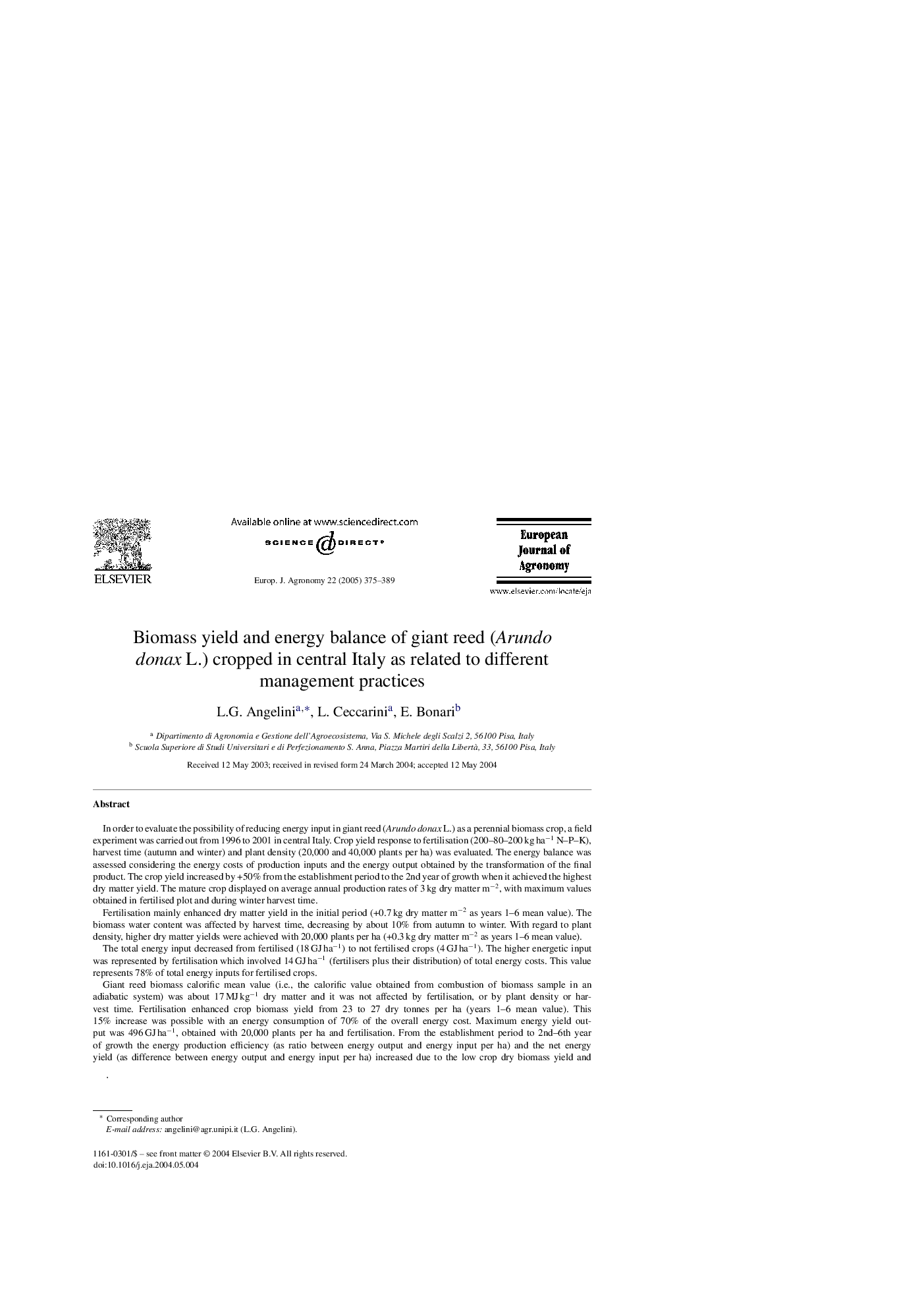| Article ID | Journal | Published Year | Pages | File Type |
|---|---|---|---|---|
| 10116631 | European Journal of Agronomy | 2005 | 15 Pages |
Abstract
Giant reed biomass calorific mean value (i.e., the calorific value obtained from combustion of biomass sample in an adiabatic system) was about 17Â MJÂ kgâ1 dry matter and it was not affected by fertilisation, or by plant density or harvest time. Fertilisation enhanced crop biomass yield from 23 to 27 dry tonnes per ha (years 1-6 mean value). This 15% increase was possible with an energy consumption of 70% of the overall energy cost. Maximum energy yield output was 496Â GJÂ haâ1, obtained with 20,000 plants per ha and fertilisation. From the establishment period to 2nd-6th year of growth the energy production efficiency (as ratio between energy output and energy input per ha) and the net energy yield (as difference between energy output and energy input per ha) increased due to the low crop dry biomass yield and the high energy costs for crop planting. The energy production efficiency and net energy yield were also affected by fertilisation and plant density. In the mature crop the energy efficiency was highest without fertilisation both with 20,000 (131Â GJÂ haâ1) and 40,000 plants per ha (119Â GJÂ haâ1).
Keywords
Related Topics
Life Sciences
Agricultural and Biological Sciences
Agronomy and Crop Science
Authors
L.G. Angelini, L. Ceccarini, E. Bonari,
